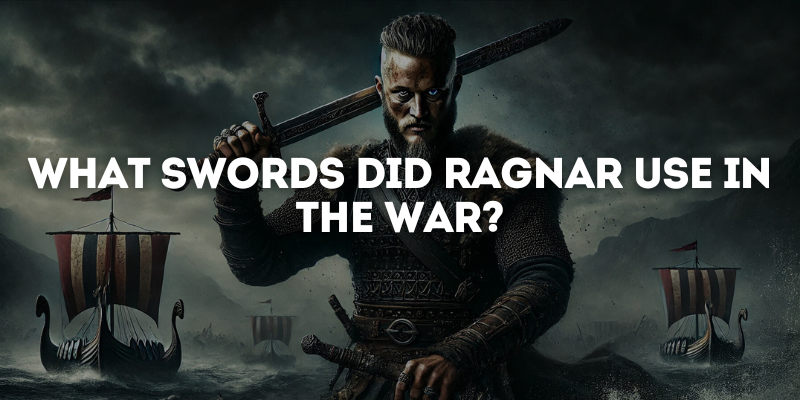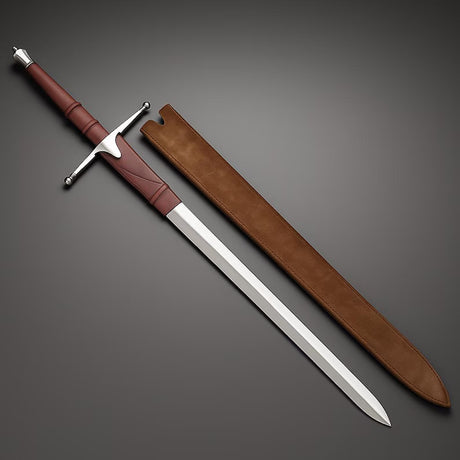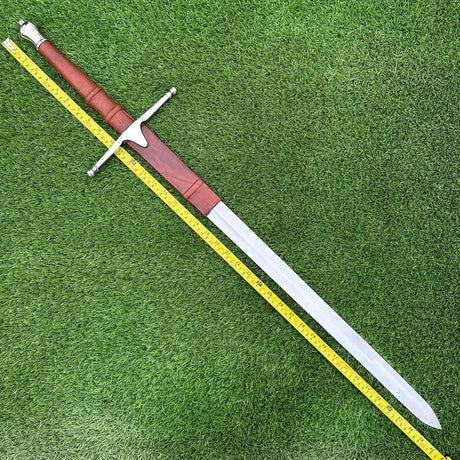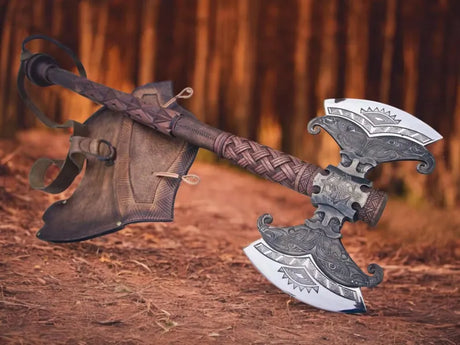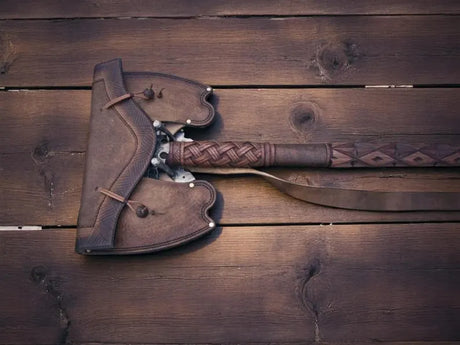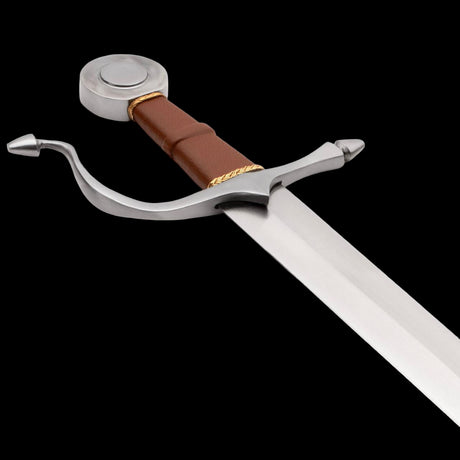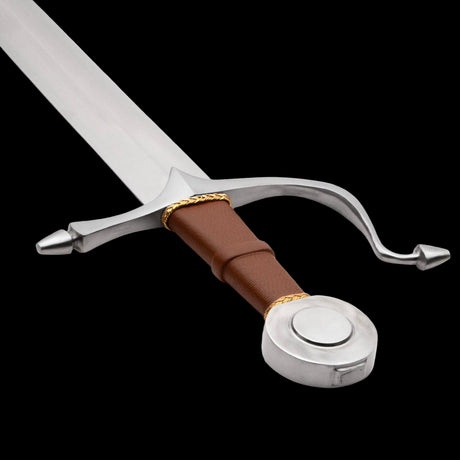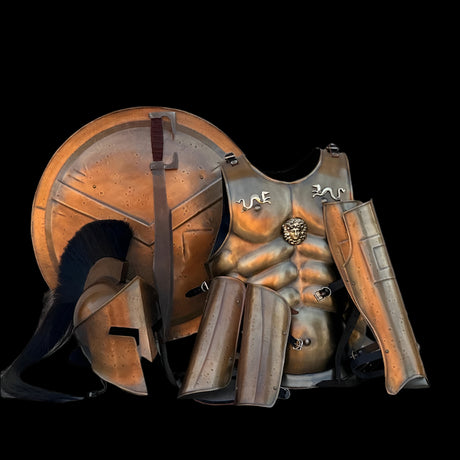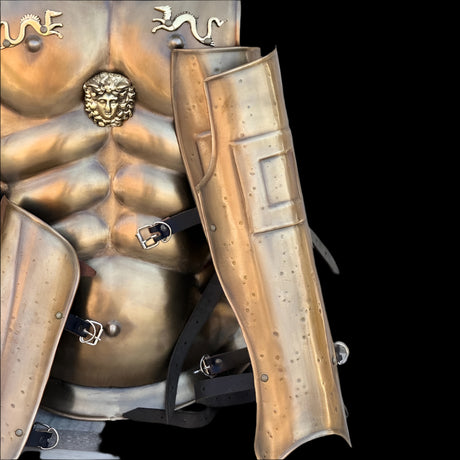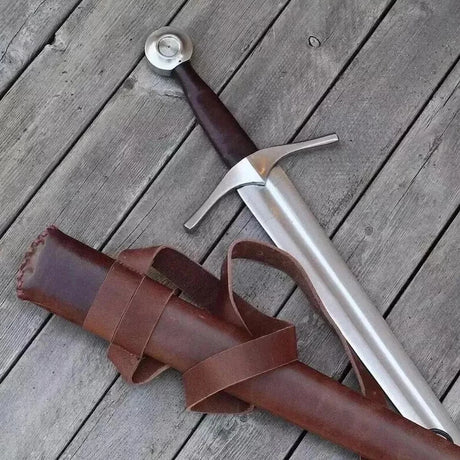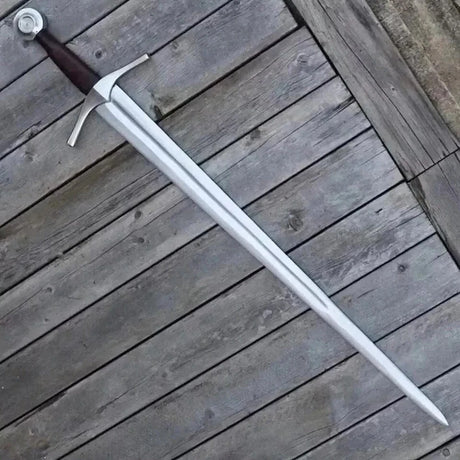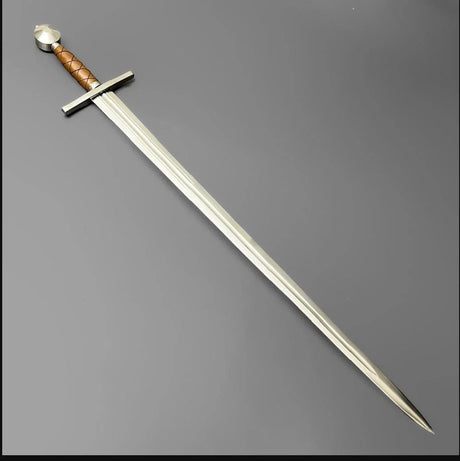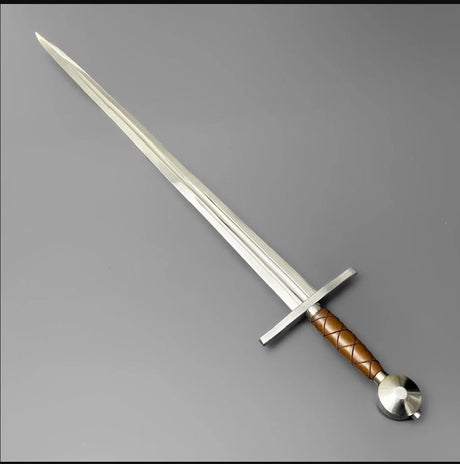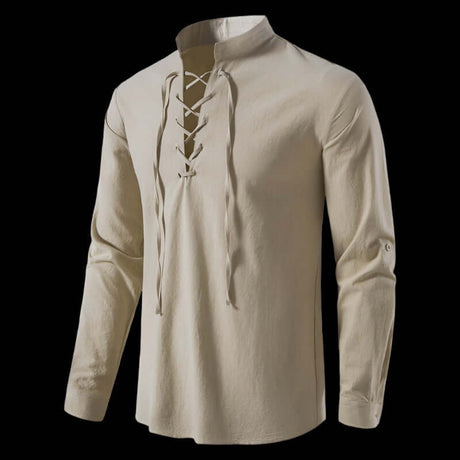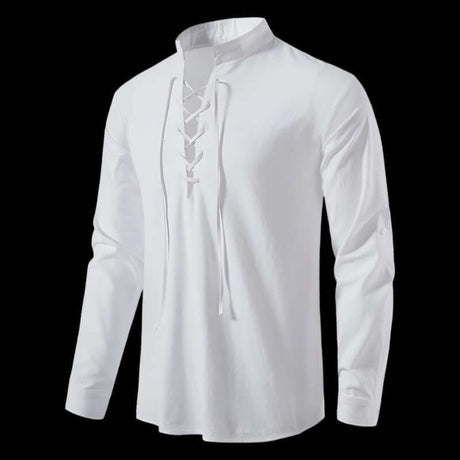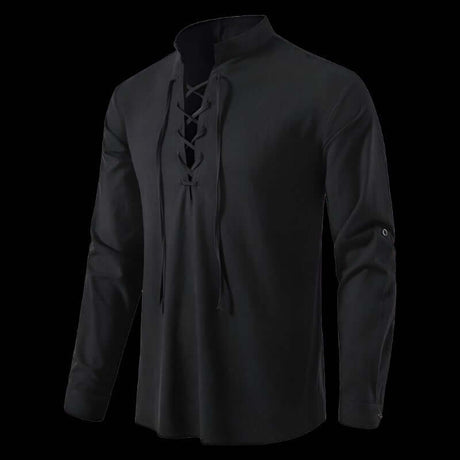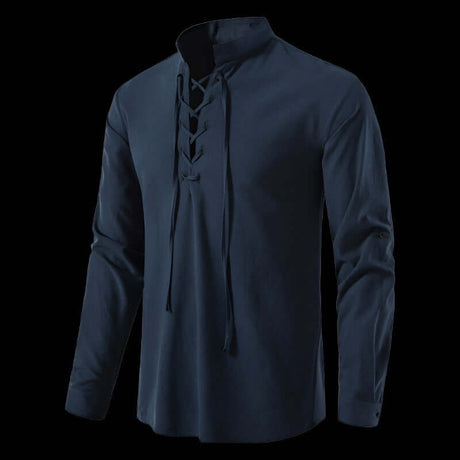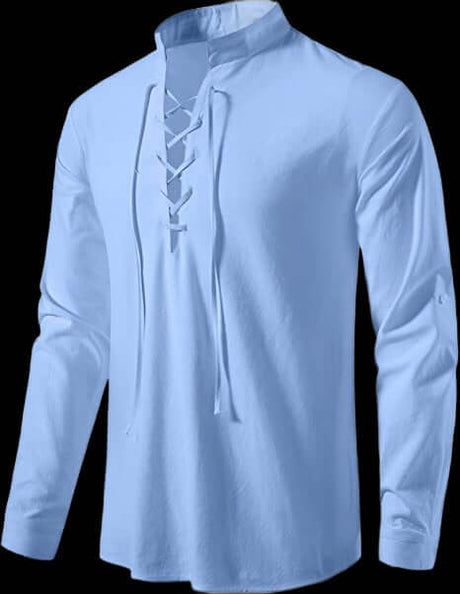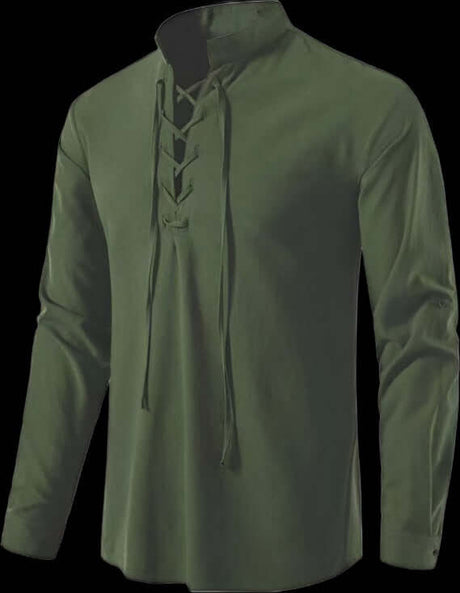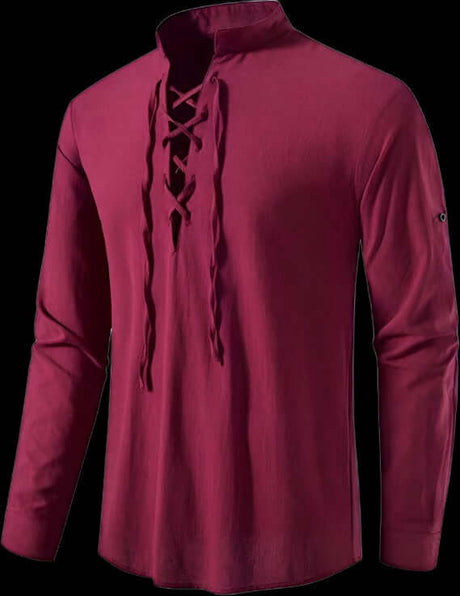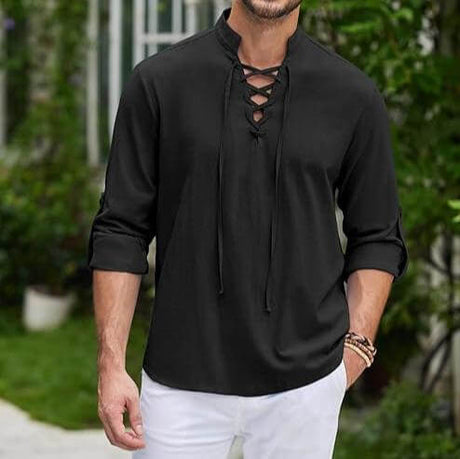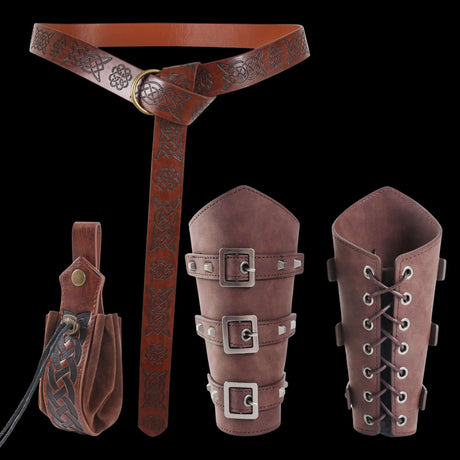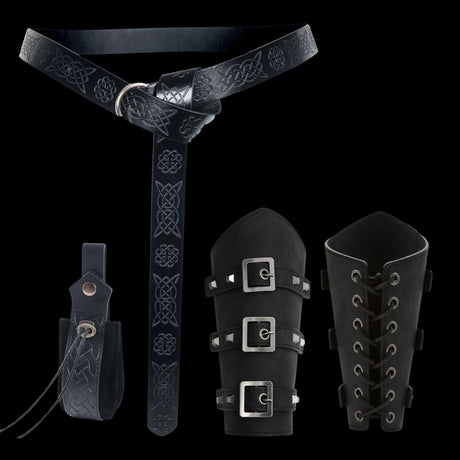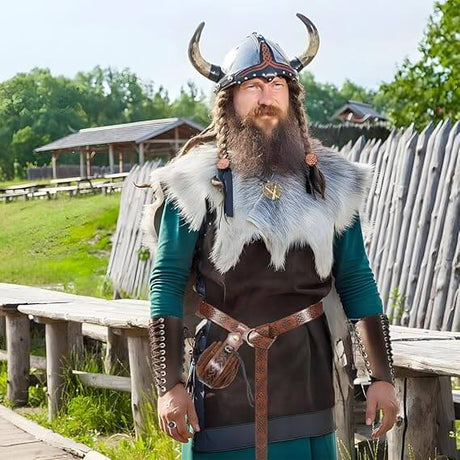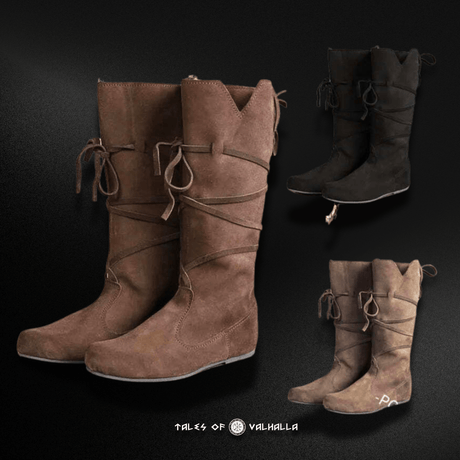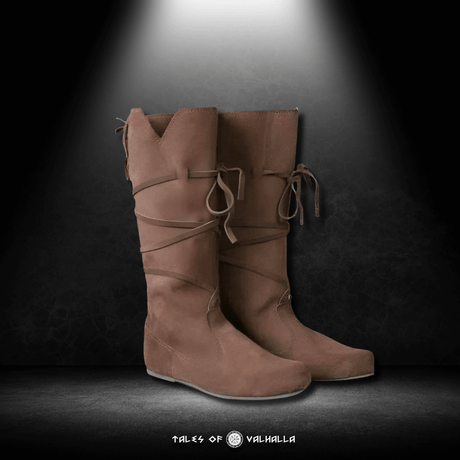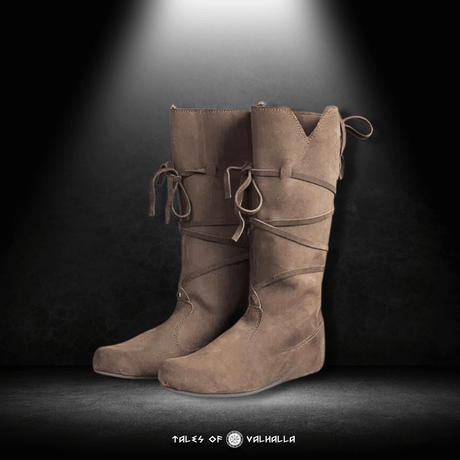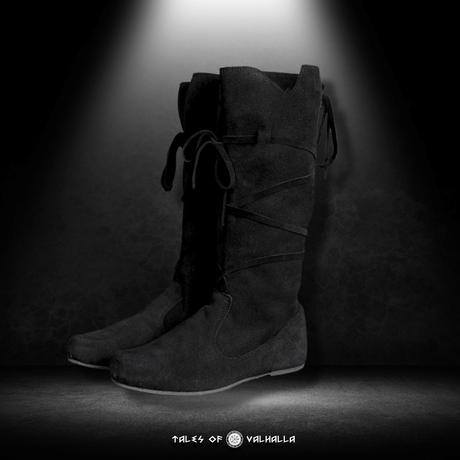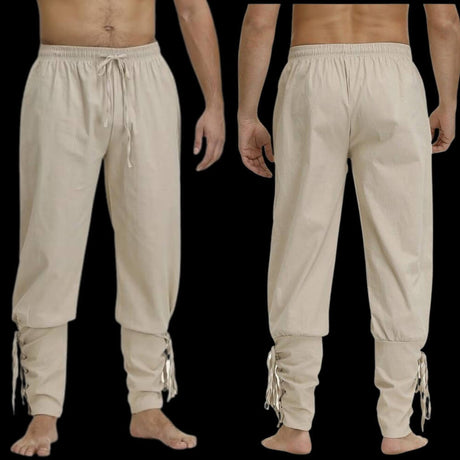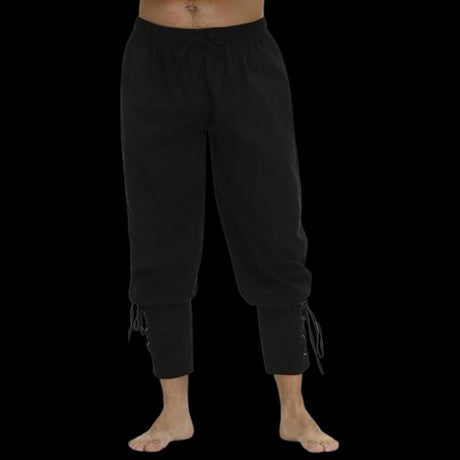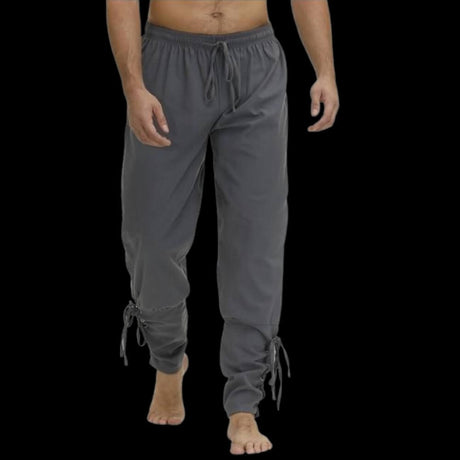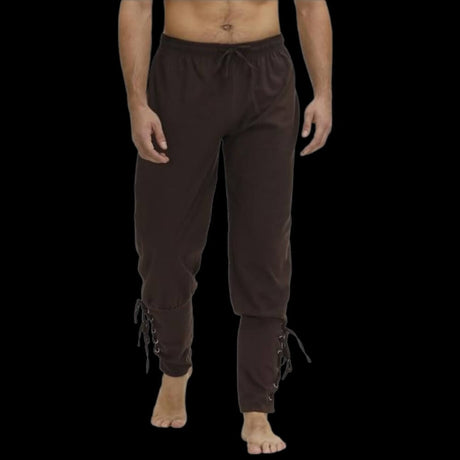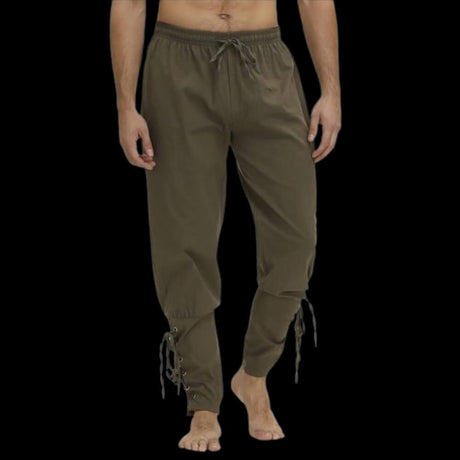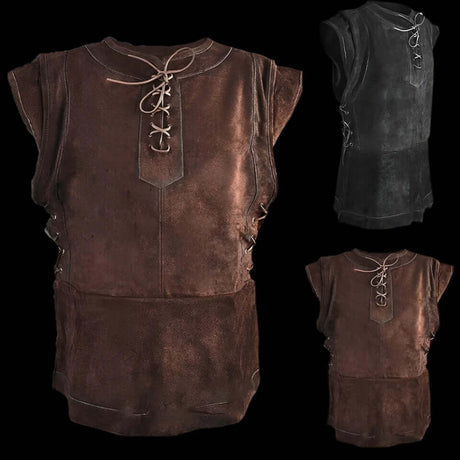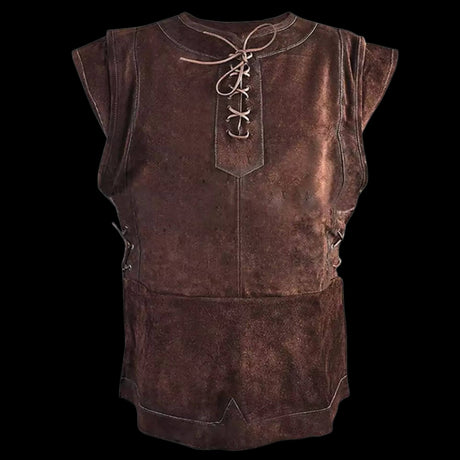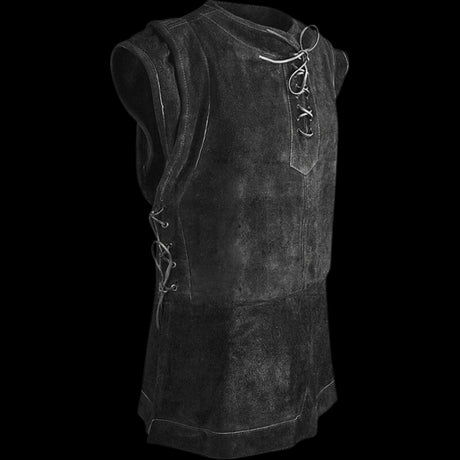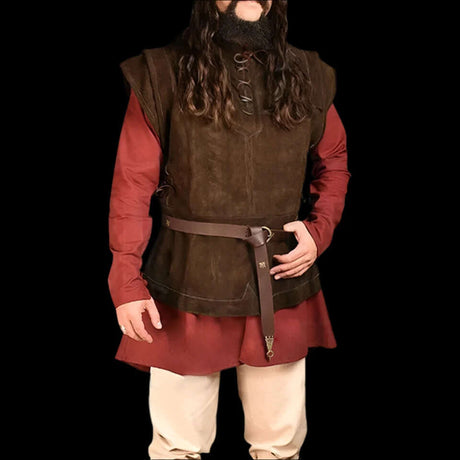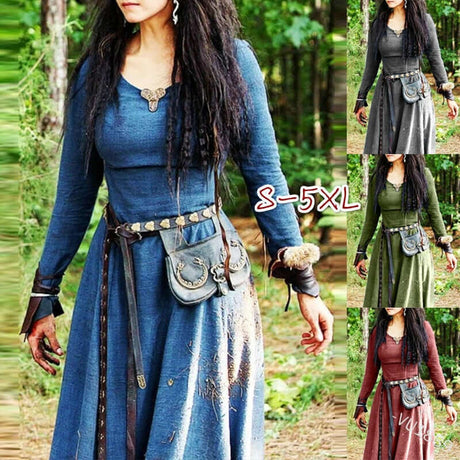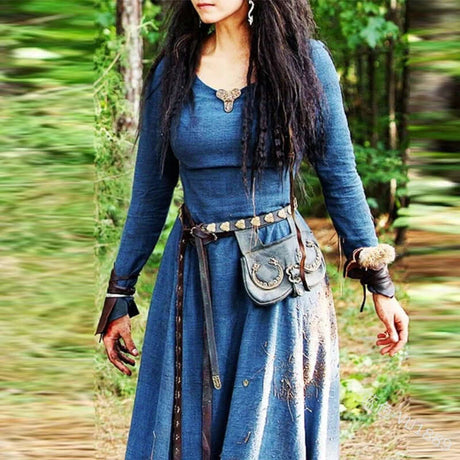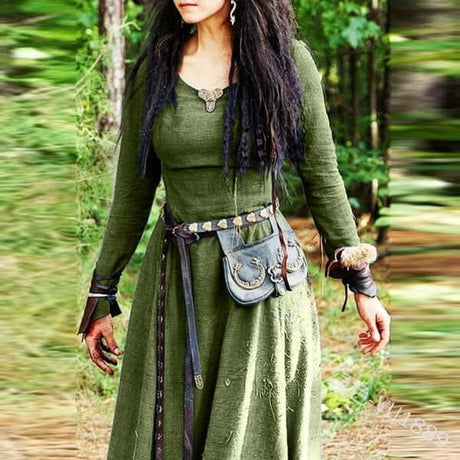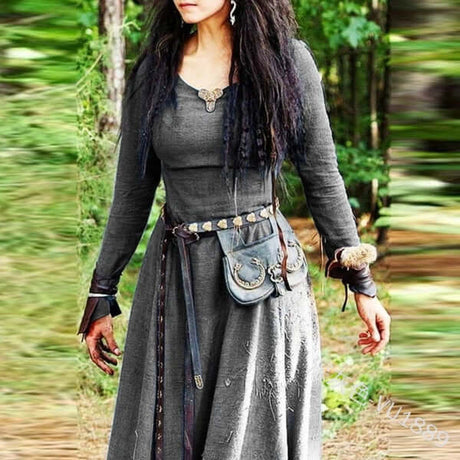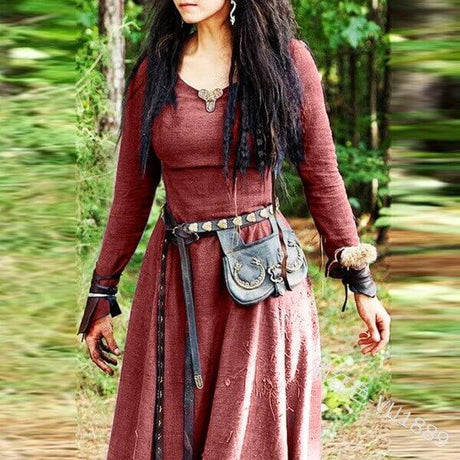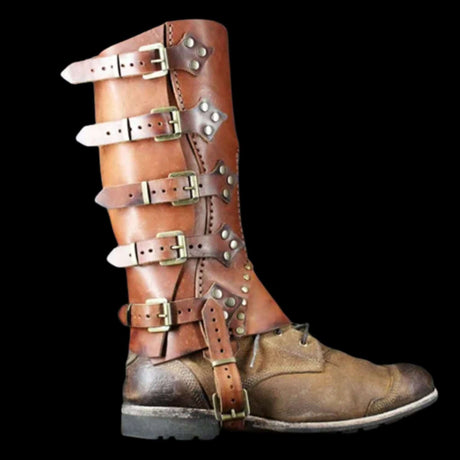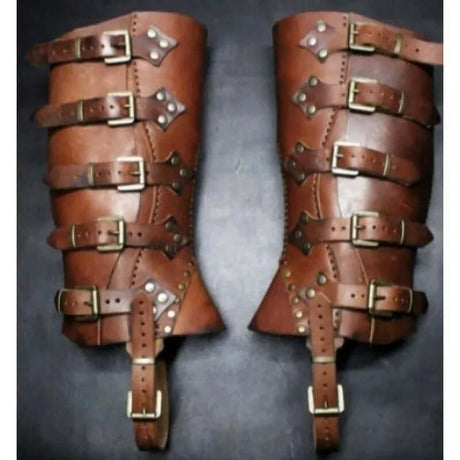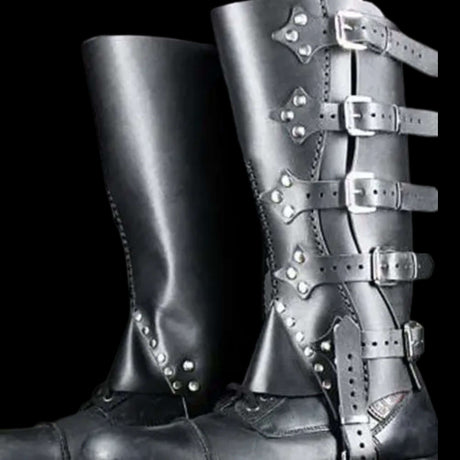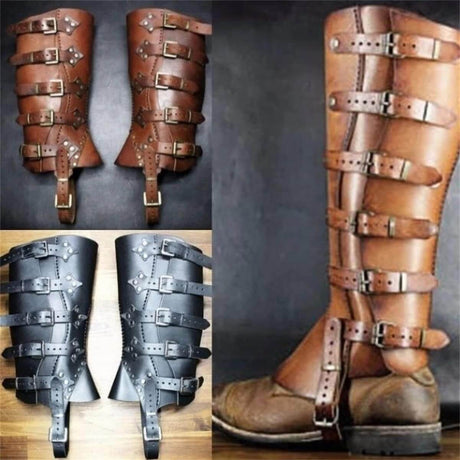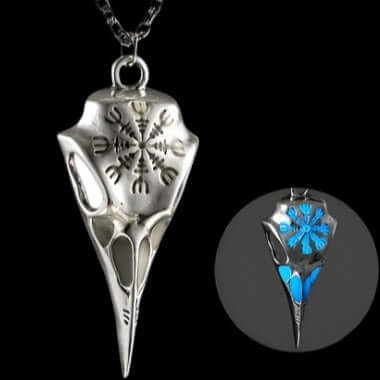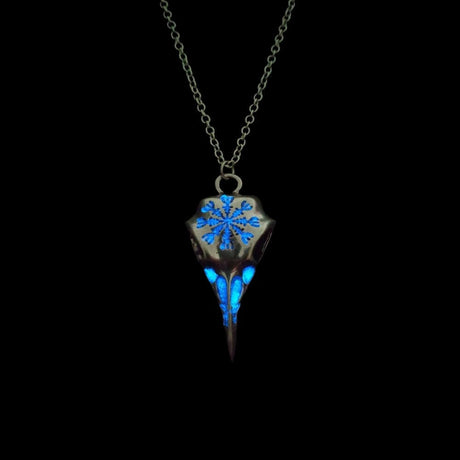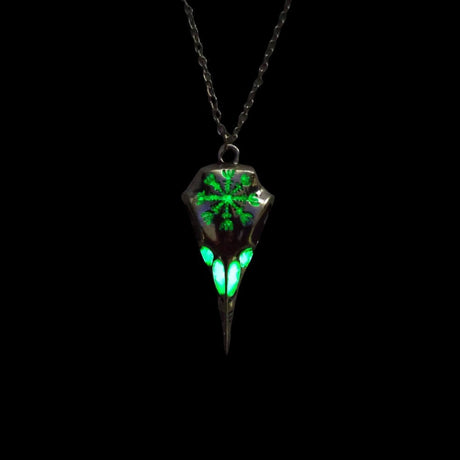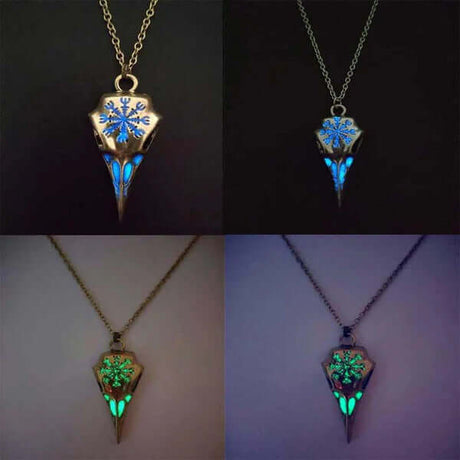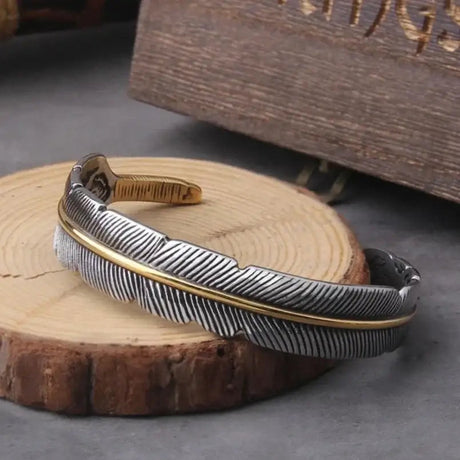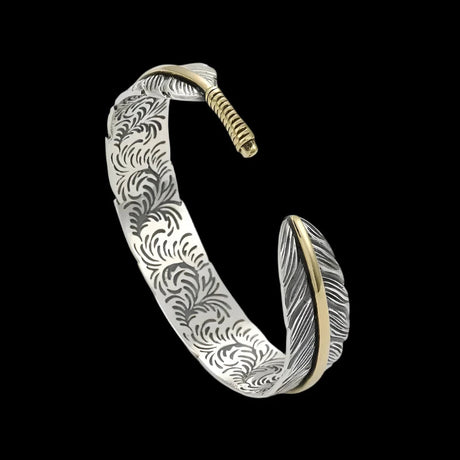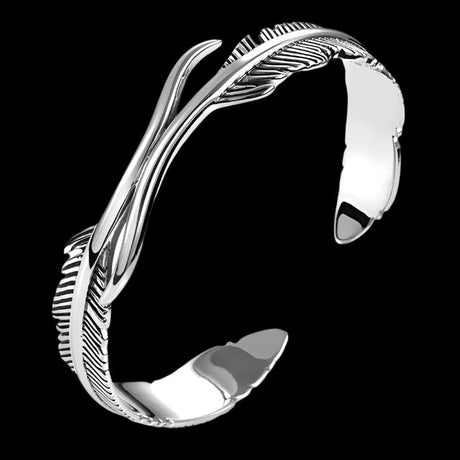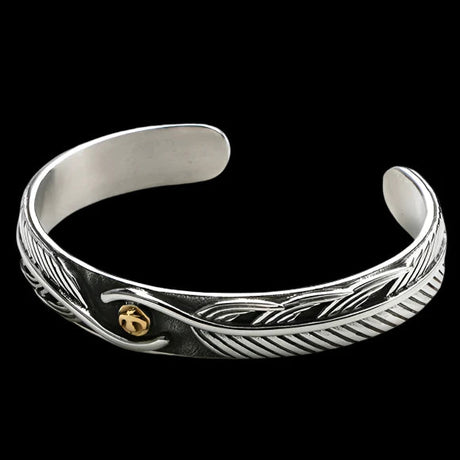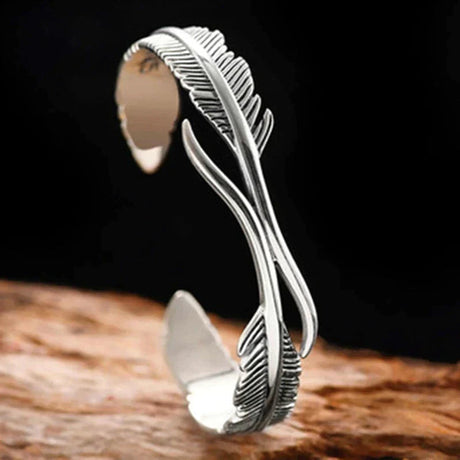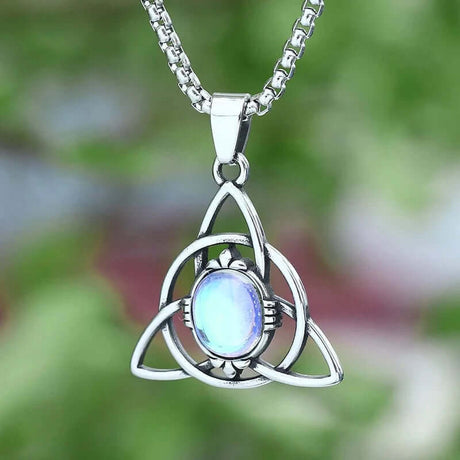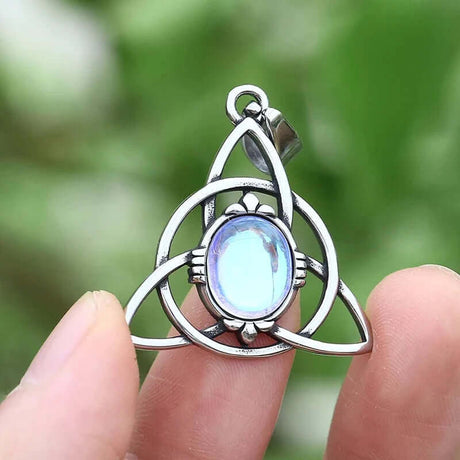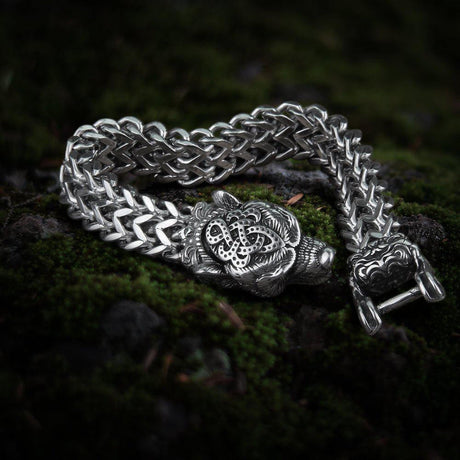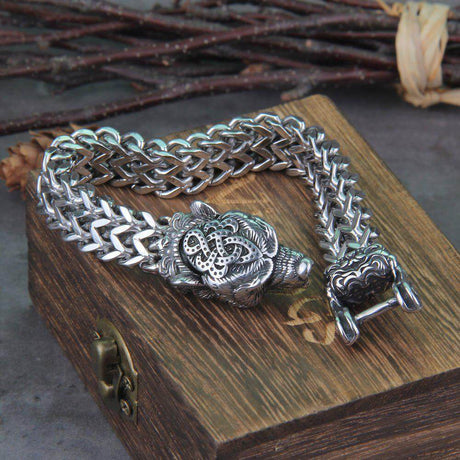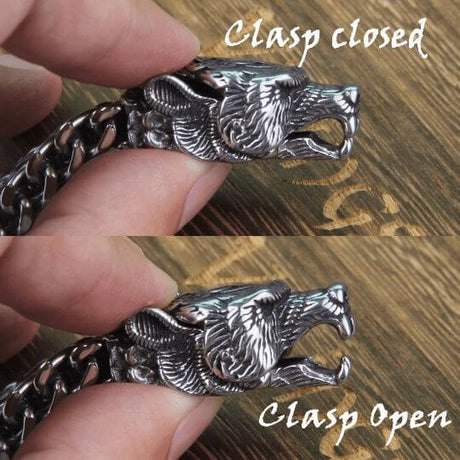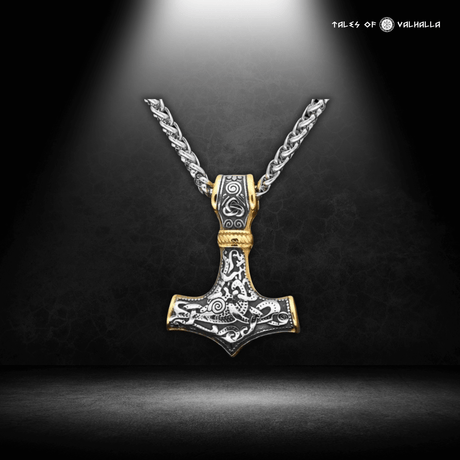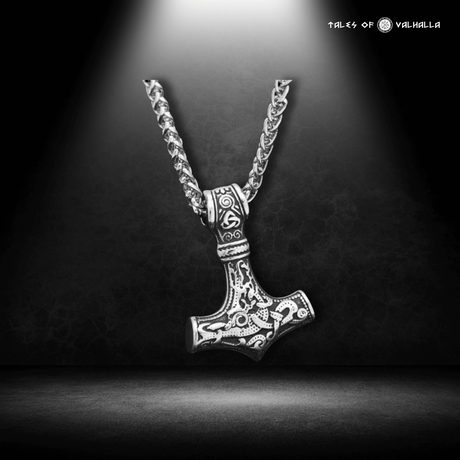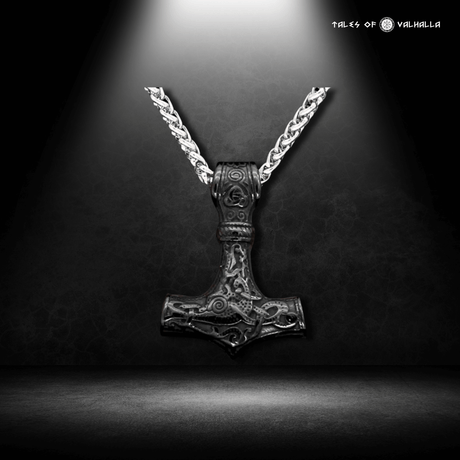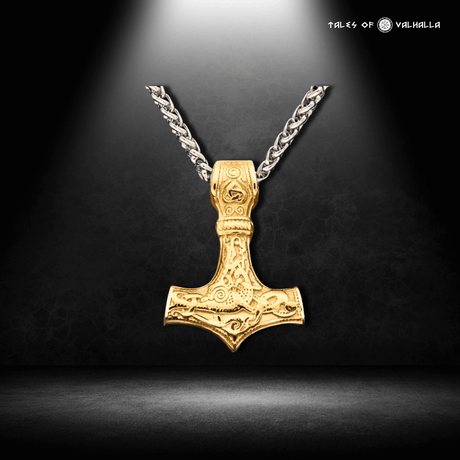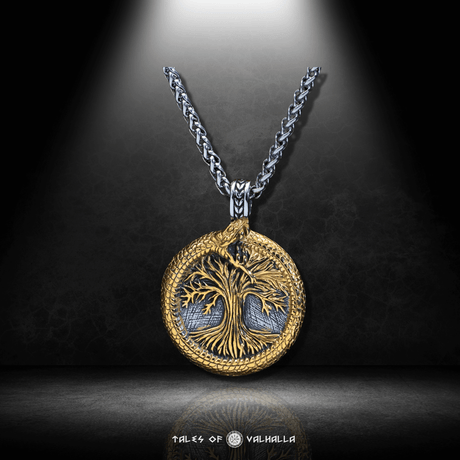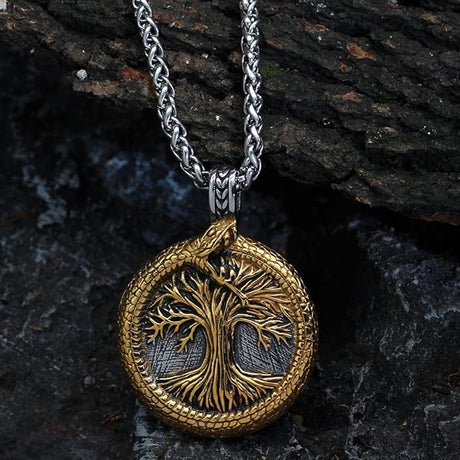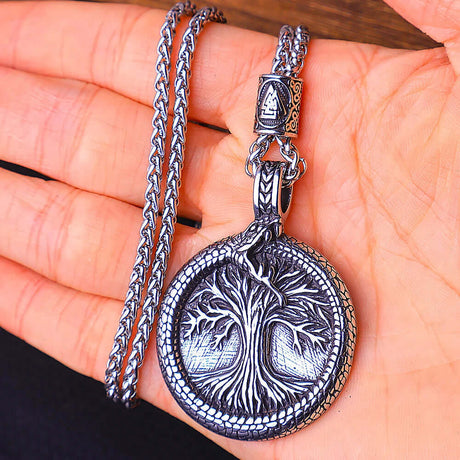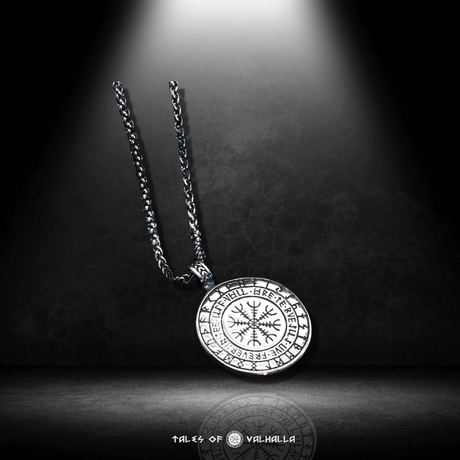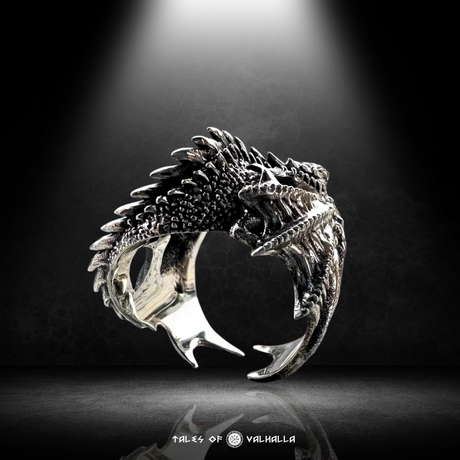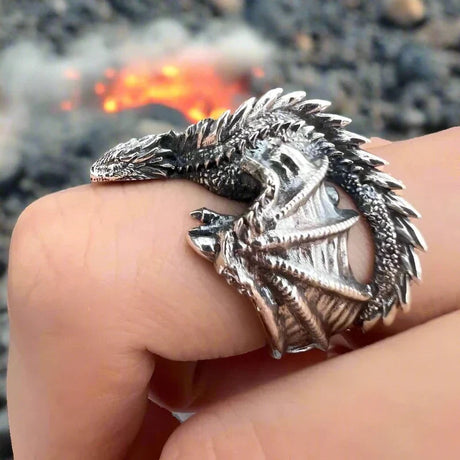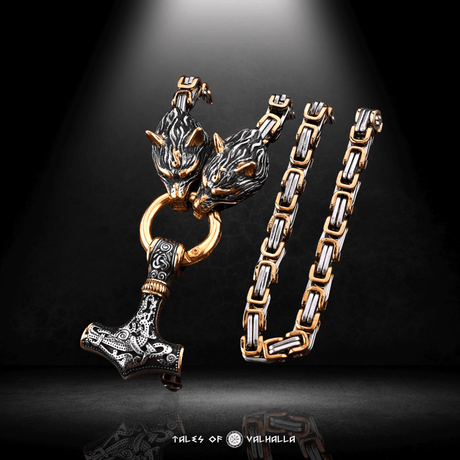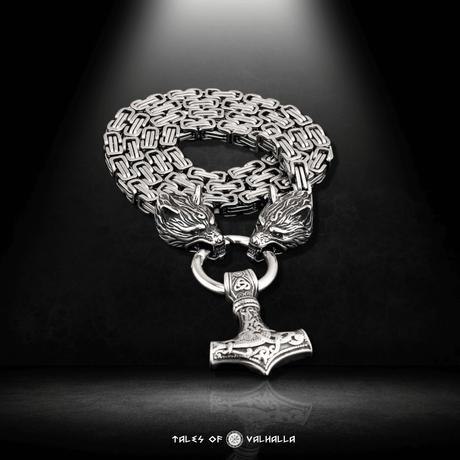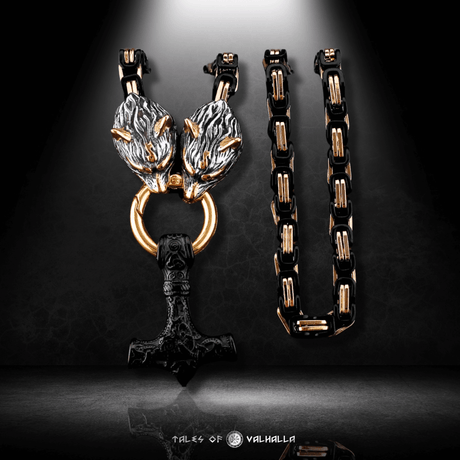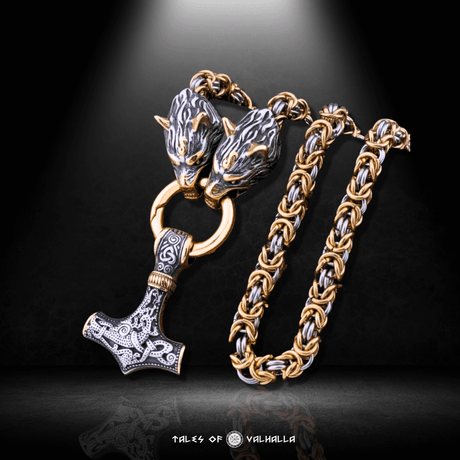Ragnar Lothbrok. The name conjures images of a fearless warrior, a cunning strategist, and a legendary Viking king. His exploits, whether rooted in historical fact or embellished by saga and legend, have captivated audiences for centuries, and his popularity has only surged in recent years thanks to popular television series. But what about the weapons he wielded? What Viking swords did Ragnar Lothbrok really use in his legendary raids and battles?
This is a tricky question. The historical Ragnar, if he existed as a single, identifiable figure, lived in the 9th century. Detailed records of specific weapons from that era are scarce. Furthermore, the sagas and stories about Ragnar often blend historical events with fantastical elements. However, by examining the types of Viking swords common during that period, and considering the depictions of Ragnar in popular culture, we can paint a compelling picture of the blades he might have carried. This blog will explore that likely arsenal, diving deep into the world of Viking weaponry and separating fact from fiction. We are going to focuse in this article, in one iconic sword, the Ragnar Sword.
The Historical Haze: Separating Fact from Fiction
Before we examine specific swords, it's crucial to address the elephant in the room: the historical ambiguity surrounding Ragnar Lothbrok. Scholars debate whether he was a single historical figure, a composite of several different Viking leaders, or a purely legendary creation.
The Sagas: Much of what we "know" about Ragnar comes from Norse sagas, epic poems written centuries after the events they describe. These sagas are filled with heroic deeds, mythical creatures, and larger-than-life characters. While they likely contain kernels of historical truth, they are not reliable historical documents in the modern sense.
Contemporary Accounts: There are some contemporary (or near-contemporary) accounts of Viking raids that might refer to Ragnar or individuals who contributed to his legend. However, these accounts are often brief and lack detailed descriptions of specific individuals or their weapons.
Archaeological Evidence: Archaeological finds, including excavated Viking swords, provide valuable insights into the weaponry of the period. However, it's impossible to definitively link any specific surviving sword to Ragnar Lothbrok himself.
Therefore, when we discuss "Ragnar's sword," we're operating in a realm of informed speculation, drawing on historical knowledge of Viking weaponry and the popular image of Ragnar as depicted in sagas and modern media.
The Viking Sword: A Symbol of Power and Status
Regardless of whether Ragnar wielded a specific, identifiable blade, we know that the sword was the quintessential Viking weapon. It was far more than just a tool for killing; it was a symbol of status, wealth, and personal honor.
A high-quality sword was a significant investment, often costing the equivalent of several cows or even a small farm. This reflected the skill and time required to forge a strong, reliable blade. Swords were often passed down through generations, becoming treasured family heirlooms that connected a warrior to his ancestors. Vikings often gave names to their swords, reflecting their personality, their history, or their perceived magical properties. This further emphasized the personal bond between a warrior and his blade. Swords played a crucial role in oath-taking ceremonies. Swearing an oath on a sword was a binding act, underscoring the seriousness of the commitment.
The Viking Sword
The loss of a sword in battle was a significant disgrace, representing not only the loss of a valuable weapon but also a blow to a warrior's honor and reputation.
The Anatomy of a Viking Sword: What Would Ragnar Have Wielded?
While we can't pinpoint the sword of Ragnar Lothbrok, we can confidently describe the type of sword he would have used. Viking swords of the 9th century generally shared these characteristics:
Double-Edged Blade: Designed for both cutting and thrusting, offering versatility in combat.
Broad and Straight: The blade was typically broad and relatively straight, ranging from 30 to 36 inches in length. This design provided a good balance between reach and maneuverability.
Fuller: A shallow groove running down the center of the blade (the fuller) reduced the sword's weight without significantly compromising its strength. This made the sword quicker and easier to handle.
Hilt Components: The hilt consisted of a grip (often made of wood, bone, or antler), a guard (to protect the hand), and a pommel (a counterweight at the end of the grip, which also helped secure the blade).
Pattern Welding: High-quality Viking swords were often made using pattern welding, a complex technique that involved forging together different types of iron and steel. This created a blade with superior strength, flexibility, and a distinctive, beautiful pattern.
These features combined to create a weapon that was both effective and aesthetically pleasing. A well-made Viking sword was a formidable tool in the hands of a skilled warrior.
The "Ragnar Sword": A Modern Interpretation
🔥 Link to product: Buy Now
The "Ragnar Sword," as offered by Tales of Valhalla, is a modern interpretation of a Viking sword, inspired by the legendary figure and the depictions of his weapon in popular culture, particularly the television series "Vikings." It's important to understand that this is not a historical artifact claiming to be the sword of Ragnar, but rather a carefully crafted replica that embodies the type of sword he likely would have wielded.

Ragnar Sword
Let's examine its features: The sword likely features a broad, double-edged blade with a well-defined fuller, consistent with 9th-century Viking swords. The length and specific shape of the blade would be based on historical examples and designed for both cutting and thrusting. The hilt is likely to be made of high-quality materials, perhaps with a wooden grip wrapped in leather or wire for a secure hold. The guard and pommel might be made of bronze or steel, and could feature intricate carvings or designs inspired by Viking art. The blade itself is likely made of high-carbon steel, offering a good balance of strength, flexibility, and edge retention. While some historical swords were pattern-welded, this replica might or might not utilize that specific technique. The product description should clarify the steel type and construction. The "Ragnar Sword" is likely to have a visually striking appearance, drawing inspiration from both historical examples and the popular image of Ragnar Lothbrok. This might include details like a slightly curved pommel, decorative elements on the guard, or even (if inspired by the TV show) the addition of faux gems or other embellishments. It’s this look which has made this sword very popular.
It is a beautiful sword, based on a fictional character, this replica captures the essence of what a legendary Viking leader's sword might have looked like. It's a piece that appeals to both history enthusiasts and fans of the popular depictions of Ragnar Lothbrok.
Other Potential Viking Swords of Ragnar's Era
While the "Ragnar Sword" offers a compelling visual representation, it's worth considering other types of Viking swords that were common during Ragnar's time. These provide a broader context for understanding the weaponry of the period:
Petersen Type Swords: Archaeologist Jan Petersen developed a typology of Viking swords based on hilt design. Different Petersen types were popular at different times and in different regions. A sword from Ragnar's era might fall into one of several Petersen types, such as Type H, Type L, or Type X, each with subtle variations in hilt shape and decoration.
Ulfberht Swords: These are a group of high-quality Viking swords bearing the inscription "+ULFBERH+T" on the blade. They were renowned for their superior strength and sharpness, likely due to the use of crucible steel, a relatively advanced technology for the time. While we have no evidence that Ragnar owned an Ulfberht, it's certainly possible that a warrior of his status could have acquired such a prized weapon.
Pattern-Welded Swords: As mentioned earlier, pattern welding was a common technique for creating high-quality Viking swords. These blades, with their distinctive swirling patterns, were both beautiful and exceptionally strong. A warrior like Ragnar would almost certainly have sought out a pattern-welded blade.
These examples highlight the diversity and sophistication of Viking sword craftsmanship. While we can't know the exact details of Ragnar's personal weapon, we can be confident that it would have been a formidable and well-crafted blade, reflecting his status and skill as a warrior.
- See more: Sword Collection
The Sword in Viking Culture: Beyond the Battlefield
The significance of the Viking sword extended beyond its practical use in combat. It played a role in various aspects of Viking culture:
- Rites of Passage: A young man might receive his first sword as a symbol of his transition to adulthood.
- Burial Rituals: Swords were often included in Viking burials, sometimes deliberately bent or broken ("killed") to accompany the deceased warrior to the afterlife.
- Mythology and Legend: Swords with magical properties and legendary histories feature prominently in Norse mythology. For example, the god Freyr possessed a sword that could fight on its own.
- Art and Decoration: Swords and sword components were often decorated with intricate carvings, inlays of precious metals, and other artistic embellishments.

The Sword in Viking Culture
These examples demonstrate the deep cultural significance of the sword in Viking society. It was more than just a weapon; it was a symbol of identity, status, and connection to the past.
Hypothetical Statistics on Interest Viking Culture
It's clear that interest in Norse mythology is thriving in the United States. We see this reflected in the rising popularity of books on the subject, with sales increasing significantly in recent years. Online searches for terms like "Ragnar Lothbrok" and "Viking swords" have shown a consistent upward trend, and social media platforms are buzzing with discussions and posts about Norse myths and legends. Even the sales of merchandise featuring these iconic symbols have seen a steady climb, indicating a broader cultural embrace of this fascinating mythology. The increasing interest of Norse Mythology can also be attributed to an increasing number of University level programs offering Norse Mythology courses. Another indication of the increasing interest is the success of the movies that includes Norse characters.
Conclusion
Whether we're discussing a historically accurate replica or a modern interpretation inspired by legend, the Viking swords associated with Ragnar Lothbrok hold a powerful allure. They represent the skill of Viking craftsmen, the courage of Viking warriors, and the enduring fascination with this iconic period of history. The "Ragnar Sword," in particular, offers a tangible connection to a legendary figure, allowing us to imagine the weight of history in our own hands.
The sword was the soul of the Viking warrior, and exploring the different types of blades, their construction, and their cultural significance provides a deeper understanding of the Viking Age. The legacy of these weapons, and the warriors who wielded them, continues to inspire awe and captivate imaginations today.
To explore a collection of high-quality Viking swords and other Norse-inspired artifacts, visit Tales of Valhalla.
FAQs
1. Was Ragnar Lothbrok a real person, and did he have a special sword?
The historical existence of Ragnar Lothbrok is debated. He may have been a real Viking leader, a combination of several figures, or largely a legendary creation. The Norse sagas, written centuries later, describe him as a great warrior, but they don't detail a specific, uniquely named sword like King Arthur's Excalibur. While he undoubtedly used swords (plural!), there's no historical record of one particular, named blade belonging to him. The "Ragnar Sword" we often see is a modern interpretation inspired by Viking swords of the era and his depiction in popular culture.
2. What kind of sword "would" a Viking leader like Ragnar have used?
A Viking leader like Ragnar, whether real or legendary, would have wielded a high-quality sword typical of the 9th century. This would likely have been a double-edged, relatively straight blade, about 30-36 inches long, with a fuller (a groove down the center). The hilt would have a guard, grip, and pommel, often made of materials like wood, bone, antler, or even decorated with precious metals. The best blades were often pattern-welded, a technique that created strong, flexible, and beautiful blades.
3. Is the "Ragnar Sword" from the TV show historically accurate?
The "Ragnar Sword" as depicted in the TV show "Vikings" is a visually appealing prop, but it's not a perfectly accurate representation of a 9th-century Viking sword. It incorporates elements of historical design, but also includes stylistic flourishes for dramatic effect. It's best understood as a modern interpretation inspired by history, rather than a precise replica.
4. What's the difference between a replica "Ragnar Sword" and a real Viking sword?
A real Viking sword is an archaeological artifact, a genuine weapon from the Viking Age. These are incredibly rare and found in museums or private collections. A replica "Ragnar Sword," like the one sold by Tales of Valhalla, is a modern-made sword inspired by historical Viking swords and the popular image of Ragnar. Replicas vary in quality; some are purely decorative, while others are "battle-ready" and made with functional materials and construction.
5. Why are Viking swords so popular today?
Viking swords have captured the public imagination for several reasons. Viking history and mythology are increasingly popular in books, movies, TV shows, and video games. The sword itself is a powerful symbol of strength, courage, and adventure. The craftsmanship of historical Viking swords (and high-quality replicas) is also impressive, appealing to collectors and history enthusiasts.
6. Can I learn to fight with a Viking sword?
Yes, there are groups and schools dedicated to Historical European Martial Arts (HEMA) that teach Viking-era combat techniques. However, it's crucial to approach this with safety and respect. Never use a decorative replica for any kind of fighting. Even with a "battle-ready" replica, proper training and safety equipment are essential. Consult with experienced HEMA practitioners before attempting any sword fighting. It is not a toy.

